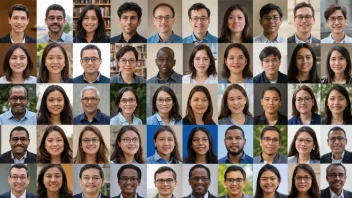The aging workforce presents unique challenges for economies worldwide, necessitating innovative policy responses to ensure sustainability and productivity. As the demographic landscape shifts, understanding how policy can effectively address these challenges is crucial for both current and future labor markets. This article explores five key policy approaches that can help manage the implications of an aging workforce, fostering an inclusive and productive environment for all age groups.
1. Promoting Lifelong Learning
One of the most effective ways to address the challenges posed by an aging workforce is through the promotion of lifelong learning initiatives. These programs encourage older workers to continuously update their skills and knowledge, making them more adaptable to changing job requirements. Key components of successful lifelong learning policies include:
- Accessible Training Programs: Governments can partner with educational institutions to provide affordable or free training programs tailored to the needs of older workers.
- Flexible Learning Options: Offering online and part-time courses allows older individuals to learn at their own pace without disrupting their current employment.
- Incentives for Employers: Providing tax breaks or grants to companies that invest in training for older employees can encourage businesses to support lifelong learning.
2. Enhancing Workplace Flexibility
Workplace flexibility is another critical policy area that can significantly benefit an aging workforce. By creating more adaptable work environments, organizations can help older employees maintain their productivity and job satisfaction. Some strategies include:
- Remote Work Options: Allowing employees to work from home can reduce commuting stress and accommodate health needs.
- Flexible Hours: Implementing staggered shifts or part-time positions can help older workers balance work with personal responsibilities.
- Job Sharing: This arrangement allows two employees to share one full-time position, providing older workers with reduced hours while still contributing to their field.
3. Age-Friendly Workplace Policies
Creating an age-friendly workplace is essential for retaining older workers and attracting new talent. Policies that promote inclusivity and respect for all ages can lead to a more harmonious work environment. Key elements include:
- Anti-Discrimination Laws: Strengthening laws to protect older workers from age discrimination can foster a culture of respect and equality.
- Health and Wellness Programs: Providing resources for physical and mental health can help older employees maintain their well-being and productivity.
- Mentorship Opportunities: Encouraging intergenerational mentorship can facilitate knowledge transfer and enhance collaboration between younger and older employees.
4. Supporting Retirement Transition
Policies that support a smooth transition into retirement can alleviate the pressure on the workforce while allowing older employees to exit gracefully. This support can take various forms:
- Phased Retirement Options: Allowing older workers to gradually reduce their hours can help them adjust to retirement while still contributing to their organizations.
- Financial Planning Resources: Providing access to financial advisors can help older employees prepare for retirement, ensuring they feel secure in their decision to leave the workforce.
- Community Engagement Programs: Encouraging retirees to participate in community service or volunteer work can help them stay engaged and active post-retirement.
5. Fostering Intergenerational Collaboration
Encouraging collaboration between different age groups can lead to innovative solutions and a more dynamic workforce. Policies that promote intergenerational interaction can be beneficial, such as:
- Team-Based Projects: Forming diverse teams that include members from various age groups can enhance creativity and problem-solving.
- Workshops and Events: Organizing events that focus on sharing experiences and skills can help bridge the gap between generations.
- Inclusive Recruitment Practices: Ensuring job postings appeal to a broad age range can help attract a diverse workforce, enriching the organizational culture.
In conclusion, addressing the challenges of an aging workforce requires a multifaceted approach that incorporates lifelong learning, workplace flexibility, age-friendly policies, retirement support, and intergenerational collaboration. By implementing these policies, governments and organizations can create an inclusive environment that not only values the contributions of older workers but also enhances overall productivity and economic stability.






